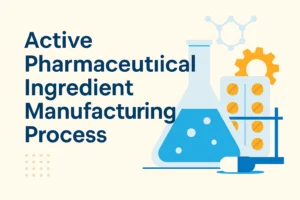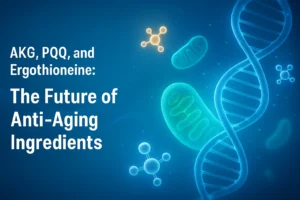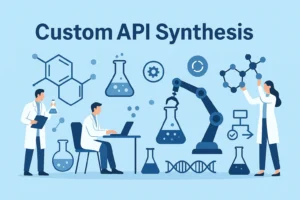In the field of antiviral drug development, the transition from tenofovir disoproxil fumarate (TDF) to tenofovir alafenamide (TAF) is a classic example of drug evolution. As a seasoned engineer with over two decades of experience in intermediate synthesis, I have witnessed the entire journey of these two generations of drugs from the laboratory to industrial-scale production.
Today, I would like to share with you the “chemical secrets” behind this evolution of drugs, combining technical insights with the real-life stories of frontline R&D personnel.
Evolution of Chemical Structure: From “Prodrug” to “Smart Prodrug”
The core difference between TDF and TAF lies in the breakthrough in prodrug design philosophy. When I first encountered the TDF project in 2000, its molecular structure was like an “impatient” compound—it modified the tenofovir parent nucleus via ester bonds, which solved the intestinal absorption issue but resulted in extreme fluctuations in the blood concentration of the metabolite tenofovir.
Patients had to take a high dose of 300 mg daily, which not only increased the burden of medication but also left renal toxicity like a time bomb inside the body.
In contrast, TAF’s molecular design is a prime example of a “slow-release” approach: introducing an isopropyl ester group at the hydroxyl position of the parent nucleus to form a more stable phosphoramidate ester structure.
This modification not only reduces the drug particle size to 0.1–0.2 micrometers but also enables precise “targeted delivery” to the lymphatic system. Every time I see the perfect needle-like crystals formed during the crystallization of TAF intermediates in the synthesis workshop, I marvel at the ingenuity of molecular design—this structure reduces the drug’s dissociation rate in the blood by 90%, truly achieving “smart release.”
A Generational Leap in Pharmacokinetics
In the TDF era, our most challenging issue was controlling the pH sensitivity of ester bond hydrolysis. TDF behaved like a “fragile cookie” in the gastric acid environment, easily hydrolyzing and losing efficacy with even minor mishandling, necessitating reliance on special enteric coating technology.
The breakthrough in TAF’s synthesis process lies in the formation of intramolecular hydrogen bonds, creating a “stable armor” under pH 7.4 conditions. This design allows TAF to remain intact in the gastrointestinal tract until it enters lymphocytes, where it releases its active components.
Clinical data confirms the superiority of this design: TAF’s blood exposure is only one-tenth that of TDF, yet its tissue concentration is three times higher. In our quality control records, the purity standard for TAF intermediates has been elevated from 98% during the TDF era to 99.5%. Do not underestimate this 1.5% improvement; it directly ensures precise control of clinical dosages—just as adding an extra gram of sugar when baking a cake can completely alter the taste.
The Invisible Revolution in Production Processes
As an intermediate manufacturer, we are well aware that the difficulty of synthesizing TAF has increased exponentially. The synthesis pathway for TDF is like a “straight path,” consisting of five steps, with the key intermediate isopropyl ester achieving a stable yield of 85%.
In contrast, the synthesis process for TAF is like a “maze,” with 11 reaction steps. Among these, the acylation reaction of isopropyl alanine requires control of a low-temperature reaction condition at -20°C, and the catalyst dosage must be controlled within ±0.1%.
During the scale-up production phase, we encountered the challenge of unstable crystallization morphology of TAF intermediates. It was like cooking porridge with improper heat control—either too thin or too thick.
Ultimately, by adjusting the solvent system and cooling rate, we increased the crystallization yield from 65% to 88%. This process optimization not only reduced production costs but, more importantly, ensured the bioequivalence of each TAF formulation—for patients, this means assurance of safety and efficacy.
Paradigm Shift in Clinical Application
From the perspective of patient compliance, TDF is like a “hot-tempered” medication: a daily dose of 300 mg combined with potential nephrotoxicity makes it unappealing to patients with chronic kidney disease.
TAF, on the other hand, is like a “gentle gentleman,” achieving the same antiviral effect with a daily dose of 10–25 mg. This dosage advantage is particularly prominent in the elderly patient population.
In our customer feedback, several pharmaceutical companies have reduced formulation production costs by 40% by switching to TAF intermediates, while expanding the target patient population—this is made possible by our strict quality control as intermediate producers.
Future Outlook: The Value Reconstruction of Intermediate Production
As a professional manufacturer of TAF intermediates, we remain committed to innovations in drug delivery systems. The currently under-development nanocrystalline TAF intermediates act like a “navigation system” for drugs, enabling the development of subcutaneous injection formulations by controlling crystal particle sizes below 50 nm.
This technological breakthrough will fundamentally transform the administration methods of antiviral drugs, with the purity and crystal form control of intermediates being the technical cornerstone.
In the evolution of antiviral drugs, the replacement of TDF with TAF is not merely a chemical modification but a triumph of precision drug design. As participants in this transformation, we deeply understand that each intermediate molecule carries the mission of improving patients’ lives.
In the future, we will continue to focus on the field of antiviral intermediates, leveraging our two decades of synthesis experience to contribute professional expertise to global public health efforts.
For free intermediate samples, please contact: sunqian0123@gmail.com



